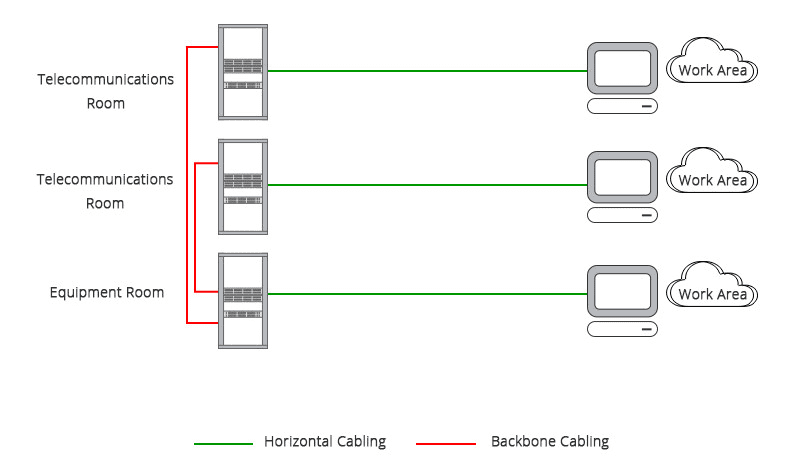
Data Cabling Backbone Installation: A Guide to Efficient Network Infrastructure
Data cabling backbone installation is a crucial aspect of building a reliable and efficient network infrastructure. Whether it’s for a small office or a large enterprise, having a well-designed and properly installed backbone is essential for seamless data transmission and communication.
The backbone refers to the main cabling system that connects all the different parts of a network. It is responsible for carrying large amounts of data between network switches, routers, and other network devices. A well-designed backbone ensures that data flows smoothly and quickly, preventing bottlenecks and ensuring optimal performance.
When planning a data cabling backbone installation, several factors need to be considered. First and foremost, the layout of the building or office space must be taken into account. Understanding the physical structure of the space helps determine the best routes for the backbone cables, minimizing the risk of damage and interference.
Another important consideration is the type of cables to be used. Category 6 (Cat6) or Category 6A (Cat6A) cables are commonly used for backbone installations due to their high bandwidth capacity and ability to support high-speed data transmission. These cables are designed to handle the demands of modern networks, including data-intensive applications and multimediaTitle: The Importance of Data Cabling Backbone Installation
Introduction: Data cabling backbone installation is a critical aspectData cabling backbone installation is a crucial aspect of any modern business. In today’s digital age, where data is the lifeblood of organizations, having a reliable and efficient data cabling infrastructure is essential for smooth operations.
The backbone of a data cabling system refers to the main network that connects various devices, such as servers, switches, and routers, within a building or across multiple locations. It is responsible for transmitting large volumes of data quickly and securely.
When it comes to data cabling backbone installation, there are several key considerations to keep in mind. Firstly, it is important to plan the layout of the cabling system carefully. This involves determining the optimal route for the cables, taking into account factors such as distance, accessibility, and potential interference.
Next, the selection of the right cables is crucial. There are different types of cables available, such as copper and fiber optic cables, each with its own advantages and limitations. The choice of cables depends on factors like the required bandwidth, distance, and budget.
Once the planning and cable selection are done, the actual installation process begins. This involves running the cables through conduits, trays, or other support structures, and terminating them properly at the endpoints. It is essential to ensure that the cables are properly labeled and organized to facilitate troubleshooting and future maintenance.
Proper testing and documentation are also essential parts of data cabling backbone installation. Testing ensures that the cables are installed correctly and are capable of transmitting data at the desired speed and quality. Documentation helps in tracking the installation process and provides valuable information for future reference or upgrades.
In conclusion, data cabling backbone installation is a critical component of any modern business. By following proper planning, selecting the right cables, and ensuring proper installation, organizations can establish a reliable and efficient data cabling infrastructure that supports their digital operations.

